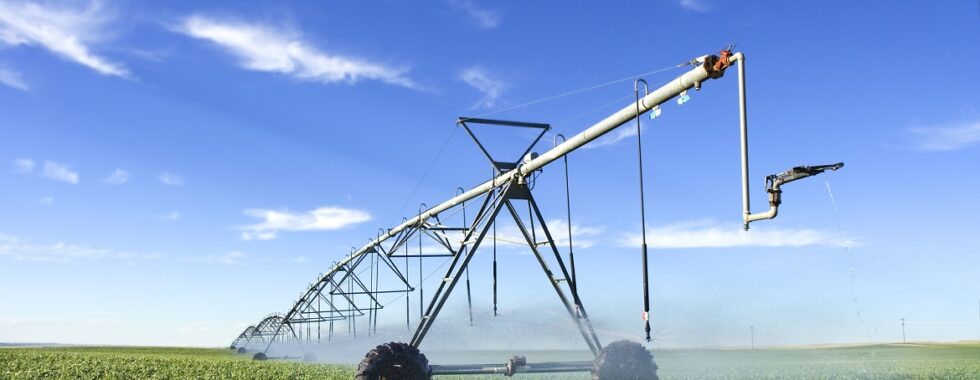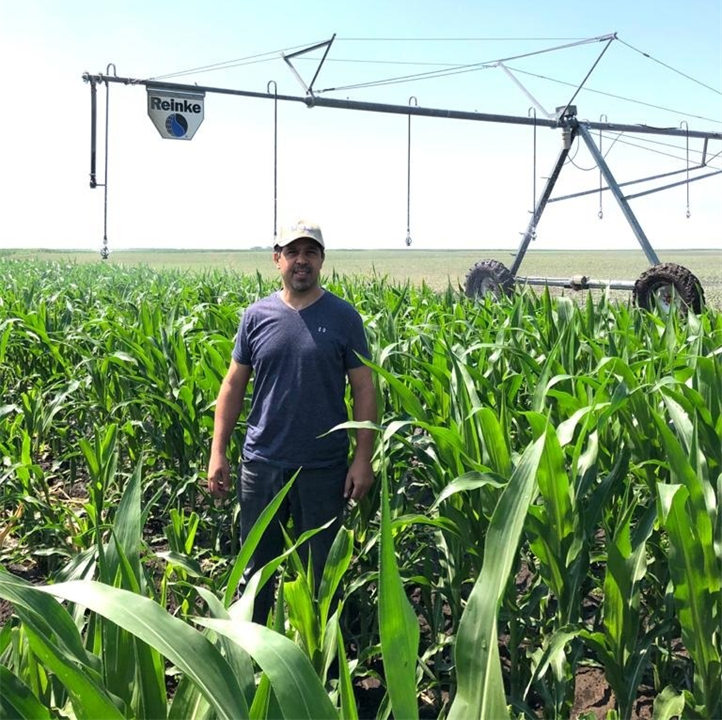Center pivot irrigation systems
Center pivot irrigation is a mechanized sprinkler system that irrigates crops in a circular pattern. In this type of systems, a long pipeline rotates around a central pivot point. The system is gaining popularity and has become the most popular irrigation methods for open field crops in the United States. In addition to irrigation, center pivots are often used for applying fertilizers, pesticides, and herbicides. With advancement of technology, the machines are becoming more sophisticated, and their capabilities are continuously enhanced, making them autonomous giant machines.
The components of the center pivot irrigation system
Pivot point – A central tower, around which the whole system revolves. It is connected to a fixed water supply. The central tower can be either fixed or movable (on wheels).
Pipeline – A long irrigation line, consisting of a series of lateral pipes. The pipe is supported by the drive towers.
Drive towers – The main pipe, on which the emitters are mounted, is supported over the ground by wheeled towers.
Span – The water pipe between drive towers.
Water emitters – Sprinklers, sprayers or bubblers that are mounted on the pipeline at a spacing that allows for high irrigation uniformity. They may vary in type, size and spacing along the pipeline.
Tower box – Installed on each drive tower and controls its movement.
Control panel – Located at the pivot point and used as the main operating point. Irrigation prescriptions are fed or uploaded to the control panel. The panel can often be controlled remotely via an app.
End gun – An end gun can be added to the machine. It is a large sprinkler that can deliver water to corners of the field that are not covered by the circular irrigation pattern of the pivot.
How is the center-pivot irrigation system designed?
The length of the system may vary between 200 and 2600 ft (60 to 790 meters). The standard machine has a length of 1320 ft (400 m) and can irrigate a 125 acres field.
The main pipe is connected to a pumping station, that pumps water from a source, such as well, river, dam, or reservoir. The water flows through the to the central tower and distributed to the sprinklers. In order for the irrigation to be uniform, the discharge of sprinklers closer to the central tower is lower than the discharge of sprinklers located at a larger distance.
The control panel enables the operator to set when to start and stop watering, as well as the direction in which the machine moves. Therefore, depending on the type and capabilities of the control panel used, the system can be operated either manually or automatically.
Modern center pivot systems can be effective even for terrains with steep slopes. Furthermore, sprinklers are set high enough, above the crop canopy, and allow its proper growth. Therefore, they can be used on almost any field crop.
Today, center pivot systems also allow for variable rate irrigation, in which variable water rates are applied to different sections of the field. This is especially important for fields that consist of different soil types and topography, or when there is variability in the crop. Such variability may be related to different crop types growing in the same field, different planting densities, differences in planting dates etc. Variable rate irrigation is controlled either by changing the speed of the pivot, or by automatically adjusting the flow rate of the sprinklers.
Advantages of using a center pivot system include:
- Efficiency: Efficient in utilizing water and saves time
- Eases the application of fertilizers and the control of pests and diseases
- Lowers labor costs
- Allows for precise application of water
- Some center pivot systems can be automated
Disadvantages of center pivot irrigation
- Initial installation is costly, thus locking out small scale farmers
- Expensive to repair and maintain
- Inappropriate for fields of an irregular shape
What does the future hold?
One of the biggest advantages of center pivots is the fact that they move across the field. This creates the opportunity to transform these machines into intelligent, autonomous platforms. Sensors and cameras can be mounted on the pivot, measuring, and analyzing every point in the field. Using machine learning and artificial intelligence capabilities, this real-time information can be combined and analyzed along with additional data sources, such as crop models, weather conditions, satellite imagery and more. This way, the center pivot can learn the field and automatically optimize irrigation, fertilization, and crop health.
Want to learn more about irrigation?
The book growers and agronomists were waiting for. Click here for more details.





